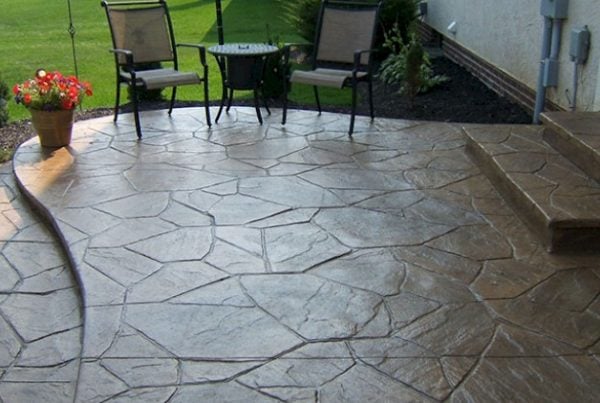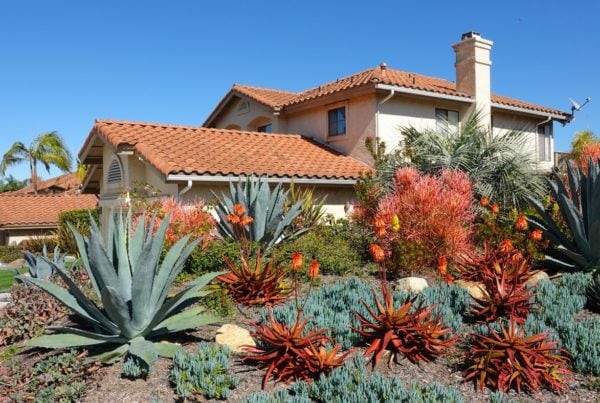For many homeowners, the onset of Spring means it’s time to plan and plant their seasonal gardens. While gardening requires some effort and consistency, it can be an enormously rewarding experience. Gardens provide not only visual appeal to your yard, but also sustenance for you and your family in the form of organic, homegrown vegetables and herbs.
Starting a simple garden is one of the easiest home projects–that’s why so many people have them! In fact, choosing the right plants is often the most challenging aspect of a new garden. Not only is there an abundance of options, but there are environmental factors to consider that can either inhibit or support healthy plant growth.
Luckily, the multitude of available plants is vast enough to build a well-diversified garden in just about any climate in the country. From annual, perennial, and biennial flowering plants to shrubs, vines, cacti and groundcovers, the possibilities for your unique home garden end only where your imagination does.
The first step to starting a new garden is to research which types of plants will flourish most in the soil and environment provided by your yard. Here’s a quick rundown on how to choose the right plants for your garden.
Test the Soil’s pH Levels
If you recall learning about potential hydrogen (pH) levels in grade school, here is where you can put that knowledge to the test. pH levels range from 0 to 14, with 0 being the most acidic, 7 being neutral, and 14 being the most basic or alkaline.
While most plants thrive somewhere between 6.0 and 7.0 pH, some prefer more acidic or more basic levels. Blueberries, for example, thrive on more acidic soil, as low as 4.5 pH. Asparagus, on the other hand, thrives in more basic soils.
By testing your soil’s pH levels early, you can adjust them accordingly using either agricultural limestone to increase the pH (more basic) or sulfur to decrease it (more acidic). This will allow you to grow the plants you want without being restricted by the natural pH levels of your soil.
Determine Outdoor Humidity
Climate is another important factor you should consider in choosing the right plants. A climate like Colorado, for instance, is particularly dry, whereas climates of southern states like Florida and Louisiana tend to be more humid.
Shrubs, grasses, and some perennials tend to thrive best in dry environments, while plants such as ferns and marigolds can withstand a bit more humidity. Too much humidity, however, is not a good thing for any plant, as it encourages mold and mildew growth.

Pick Your Plants
Arguably the most exciting step is picking your plants. It can also be the most time consuming! While usually a lot of fun, finding the best possible combination of plants to exemplify your personality and creativity can be stressful for some. Not to worry, however; every new garden is a learning experience and an opportunity to improve your skills and design sense.
Depending on where your garden plot is facing, it may get more or less sun throughout the day. A west or east-facing garden usually is best, as it provides the most sunlight without getting too hot. Although some plants such as ferns and a few types of roses can do well in the shade, the most colorful and common garden plants tend to be sun-lovers.
Before deciding on your plants, it’s best to take measurements of your garden area. This will allow you to utilize space accordingly so that your garden neither overgrows nor ends up looking too sparse. If you have multiple areas in your yard to plant in, consider which plants will be best suited for each area.
When the time comes, choose your plants wisely! Take into account color hues and tones, as vibrantly-colored flowers often clash visually with one another. When it comes to color, consistency is always a safe bet, so choose similarly-colored plants that complement rather than overpower each other.
You’ll also want to consider the height of each plant, putting the shortest plants in front and keeping the taller ones to the back. This way, your fully-grown giant tomato plant won’t block the sun from reaching the ground-level flowers and herbs behind it.
Hire a Professional Landscaper
A well-landscaped yard is the perfect complement to your home garden. Not only will a professional landscaping company shape your yard to look clean and sleek, they can also assist in planting shrubs, trees, groundcover, and other plants.
Though it takes a little work, a home garden can be one of the best ways to showcase the outdoor areas of your home to guests and neighbors. To learn more about how Rocky Mountain Precision Services can help add even more appeal to your yard, contact us today.





